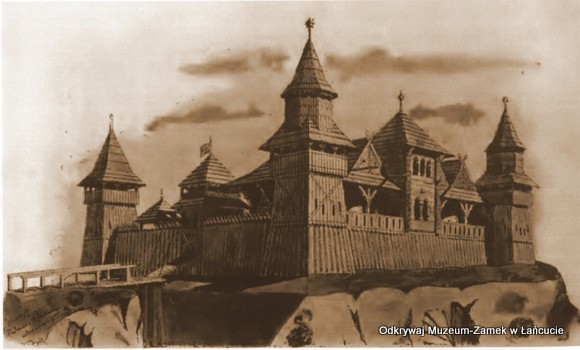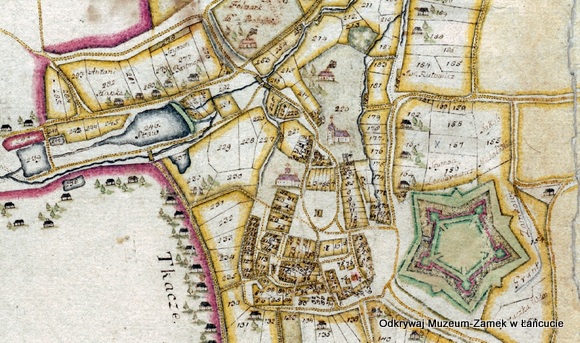On July 19, 1655, the Swedish army entered Poland; two years later, in the spring of 1657, during the war known as the "Deluge," the army of George II Rakoczy, allied with the Swedes, sacked and burned down Lancut, putting a final end to the wooden castle that had been the family seat of the Pileckis and then the Stadnickis for 300 years. The residents of Łańcut at the time were the last witnesses to the old reality, when, a short distance from each other, two castles stood in the city - one recently built, admired to this day, then belonging to the Lubomirskis (later to the Potocki family), and the other, at the time no longer inhabited, erected by the city's founder Otto Pilecki in the second half of the 14th century.

Perhaps this is how the first Łańcut castle looked like
Located on the castle hill (now the parsonage hill).
The first Castle was located on the site of today's Parson's Hill, right on the northern border of the city's former buildings. It was a wooden building (perhaps one-story), spacious, comfortable and defensive at the same time, with its own fortification system, independent of the city. However, how exactly it presented itself is unfortunately not recorded in any of the documents. It should be thought that this Gothic seat of the Pileckis and Stadnickis possessed panache and careful finishing. In its immediate vicinity, on a spacious hill, certainly stood not one building, but a whole complex of them. The most magnificent was undoubtedly the castle itself, where in Otto's time, in addition to residential interiors, a chancellery found a place, issuing numerous documents. Surrounding the castle were outbuildings for servants and military personnel, as well as farm buildings. In the days of Stanislaw Stadnicki, known as "the Devil of Lancut", there was additionally a sheepfold and a birdhouse on the hill, while the place itself was called "hell" due to the impulsive character of the owner. The wooden buildings of the castle hill finally burned down in 1610, although at that time they were certainly already after more than one reconstruction or even rebuilding. The castle itself, invaded and burned more than once, survived until the tragic Rakoczy invasion. Despite its eventual liquidation, the hill was still referred to as the castle for a long time.

A fragment of the oldest surviving map of Lancut (1759) with a view of the central part of the city.
On the castle (parsonage) hill only a small building is already visible,
to the southeast of the hill a clear outline of the fortification system of the Lubomirski fortress - today's Castle
